National Palace Museum
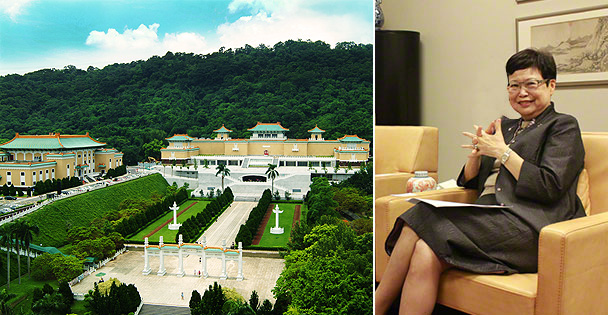
Taiwan’s National Palace Museum represents one of the world’s greatest repositories of Chinese Antiquities, with a permanent of artifacts reaching back to the earliest ages of Chinese history – multiple mellinia ago –all the way forward through to the Qing Dynasty, from which one can learn so much about Chinese history, and human history as well – what it means to review the arts and culture of a civilization as it moves across nearly 8,000 years of history – nearly 3 million days - representing 400 generations of lives lived. An amazing collection of treasures, lending insights at each glance: what did a neolithic stone carver think as he or she smoothed jade under - firelight, afternoon, dawn or dusk? In what way are these the same thoughts we have? What did a student, some four and a half thousand years later, en route to take a civil service exam, think as he traveled to the test? What did he think if he passed? What did his future promise if he failed?
Recently, we had the chance to sit down with Fung Ming-Chu 馮明珠, the director of Taiwan’s National Palace Museum. Among many topics Director Fung talked about: what it takes to make a museum successful; what era of Chinese history she would have liked to live in most; book recommendations and plans for the Southern Expansion of the National Palace museum, slated to open in 2015 in Nantou.
- 1. For a museum to be successful, what is it had to do?
- A museum to be successful, I think the role is to serve people. It offers many kinds of services, and lets people willing to visit. This is the key. And it contains many kinds of services.
- 2. For someone to be a good historian, what did they need to be interested in?
- People who study in Art History, they have their own researching categories. If you were researching in paintings, you would love to see some paintings. Recently, we had an exhibition about 4 painters from Ming Dynasty. It attracted lots of artists and historians. If you were researching in jades, then you might see the jades. If you were researching in porcelains, you might see the porcelains.
Because he was asking about being an artist, artists are too important for the reservations in the museum. These people have their own research area and they would see the different items here. For example, newspapers printed out an artifact called “Chicken Cup”. The “Chicken Cup” is in Chenghua Emperor era in Ming Dynasty. It cost 1.6 billion when winning this bid. There are two cups which are exhibiting now in the exhibit room. I believed that people who have read this article in newspapers would be surprised and want to take a look at the Chicken Cup in National Palace Museum. They must wonder why this little cup could be sold as that high price. Today, the Chicken Cup would take place from our “Jadeite Cabbage!”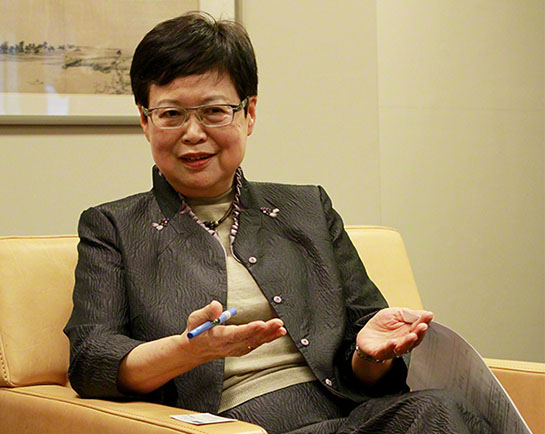 AAAA
AAAA - 3. Among many eras of Chinese history, which era would you like to live the most?
- I've never thought about it. Many literati in China said that they would like to live in Ming Dynasty. It's the most comfortable period in Chinese history. It's about 15th, 16th century, also it's about the same period of Chicken Cup. Spenser, an American historian said that if he could choose one period to live in Chinese history, he would stay in Ming Dynasty. According to Spenser’s explanations, the society in Ming Dynasty was opening. At the same time, pop culture was rising and there were a lot of activities in the society. There were especially many literati in this period. So Ming people's lifestyle was colorful. Relatively, it was more like a peace time in Ming Dynasty. Though there were wars, they were occurred in the frontier. In that time, Changjiang river basin was more peaceful, there were wars, but they were all occurred in the frontier. Furthermore, parts of political power transferred from the north to south area. That's why Changjiang river basin was full of artistic. Changjiang river basin was including nowadays' Suzhou & Hubei and Hunan provinces.
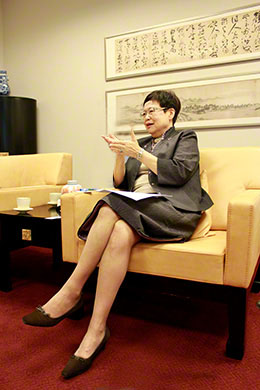 AAAA
AAAA
I've never thought about where period I want to live in. But to answer your question, I would say the Tang Dynasty. Because of that time, China is powerful. Moreover, according to the record, Tang Dynasty had comparatively less constraint to the females. Chinese female were bounded after Sung Dynasty. Before Tang Dynasty, the constraint to the females was comparatively free. So in that era, females' living and rights were more opened. And it is said that “the flourishing Age of Han & Tang Dynasty” in China. So it supposed to be a well era. - 4. Which era of Chinese history needs the most research?
- I think every period could be researched. My expertise is Ching Dynasty. Historians have their own choices. As far as I know, in the mainland China, many historians are researching the “ROC history” today. The period of “ROC history” is from the “Minguo(ROC)” been founded to year of 1949. In Taiwan, Historians who studied in Taiwan history are also increasing. My expertise is in the Ching Dynasty. With regard to your question, which era of Chinese history needs the most research? As historians, I consider it every period should be someone to research.
There is also a key for his question is that the trend of the researching. It has certain relations from the government supporting. That's why the people who studied in Taiwan history are getting more in these 10 years. Government provides scholarships to experts to study. Students & scholars could easily to get the scholarships. Same situation in mainland China, they denied the period of ROC in the past, but now they have recently admitted the history of ROC that existed. So they encouraged the scholars to study the development of ROC before the years of 1949. Scholarships would also lead the direction of history research. - 5. If you are going to identify a novel, a good historical novel from Chinese history, what do you think the great historical novel?
- Novels in Chinese history, I consider “A Dream of Red Mansions”. It introduces the society in the Ching Dynasty. Though it is a novel, it just has a good description to that era background.
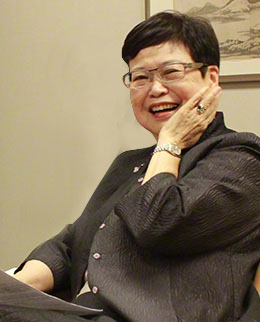 AAAA
AAAA
Another novel which introduces the Ming Dynasty is “Golden Lotus.” It has some impressive performance of its narrative & story line. “Golden Lotus” is regarded to some erotic issues, but it also reflects many phenomena in the society. These two novels are very famous and also translated into English version. The first history novel that I read was “The Romance of the Eastern Zhou.” The period of Eastern Zhou is about the Upper Neolithic. We got plenty of copperwares from this period. Such as “Mao Gong Ding”, is in the period from Western Zhou to Eastern Zhou. In that time, China was being separated into many countries. Between these countries, they were fighting to each other also cooperating. And it is the age of Confucius. I read this book when I was in high school. “The Romance of the Eastern Zhou” led me to choose the history studying. - 6. This one is a little more fun, a little more silly. Recently, what would you say the best movie for Chinese history?
- I haven't watched movies recently.
You are too busy!!
But few years ago have I watched a TV firm called ”Towards the Republic.” It's about relocating the historical positions of Yuan Shikai & the Empress Dowager Cixi and the history of the ending of Ching Dynasty & the found of ROC. In the past this period of history is thought to be a corruption time. The Empress Dowager Cixi was incompetent and so on. But in this firm Yuan Shikai & the Empress Dowager Cixi had a positive side and endorsed them for what they pushed the republicanism of China. It relocated the historical positions for them and to a certain angle, it might change some perspectives of history. It's a firm with a good way to present. Because I haven't watched movies recently, I don't know a certain historical movie.
About ”Towards the Republic”, if you were little familiar with modern history of China, you would understand that the Revolution led by Sun Yat-sen. It seemed to be a peaceful regime transferring. The last emperor of Ching Dynasty declared to abdicate. All the battles for the Revolution were over in the area of Yangtze River (Changjiang). So the northern China had not been attacked at all. Basically, it's normal in history if a revolution with bloods and had the warfare in a country's capital. But the Revolution led by Sun Yat-sen had less bleeding and only occurred in some area like Guangdong province & Changjiang river, it didn't involve the northern China.
Till the end, this firm is about relocating the historical positions of Yuan Shikai & the Empress Dowager Cixi. As far as I knew, the editors of the firm are some historians from RENMIN UNIVERSITY OF CHINA. In the end of broadcasting this firm, someone complained about it and made it finishing broadcasting in a short term and prohibited to watch it again. I watched this firm in Taiwan.
So it can't see anyone?
I don't know. It's pretty interesting. Anything is prohibited from the government makes it more popular. I believe that you could watch it in TV in Taiwan. Or you might buy a DVD or something.. - 7. Tell me, what's the next big special thing about the museum?
- I was thinking that “Chicken Cup ” might be a famous antique. People will curious about its price.
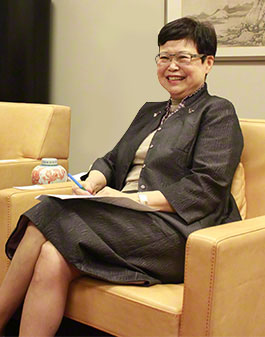 AAAA
AAAA
Assistant of Director: it may have ten or more Chicken Cups, needed to be confirmed surely.
So it was wrong on the newspaper about there’s only 6 cups. It supposed to have 10 or more.
Wow! Think about the more money you have!
Hahahahaha~
That's what I thought, our Jadeite Cabbage & the Meat-shaped Stone. The Jadeite Cabbage will be displayed in Tokyo in June 24th. When the Jadeite Cabbage is not in the National Palace Museum, we will exhibit different treasures for each week. It may last for 3 weeks. Every week has their special exhibitions. So these 3 treasures may become stars of National Palace Museum. Our Meat-shaped Stone will be displayed in Kyushu about 3 weeks in October this year. In these 3 weeks, we will exhibit 3 of the Jadeite Cabbages. But you would see all of them. Chicken Cups, Jadeite Cabbages & Meat-shaped Stone. Later the volunteer teacher would lead you to exhibit.
Ohh~Boy!
- 8. I was talking to my colleagues when I come over, it would be happy to know that everybody had come to National Palace Museum recently. So even people who are working in Taiwan also come to the museum. I want to know that you are the director, what gives you the most enthusiasm?
- I like my job. So my biggest enthusiasm is to enjoy my job. After I had gotten the master degree, I was in the National Palace Museum for 35 years. I love my job although the museum stuff are usually complicated and also makes a person feel exhausted. Because you love your job, all your difficulties would not be difficult. Now we’ve got more and more people come to visit National Palace Museum, to be a Director, I feel grateful. It just also brings with too many crowd and noises. These are the problems that I must solve.
- 9. Tell me about the museum, is it going to open in southern Taiwan? Is that right?
- Do you mean Southern Branch? Next year, now it’s being built. In the end of December next year would be opened. Its location is in the Taibao City, Chiayi County. It would define as an ”Asian Art Museum.” And when it opens, welcome to having an interview!
Well… we are looking forward to that. Definitely! That's a deal! Hahaha!
Director Fung, thank you so much! Really!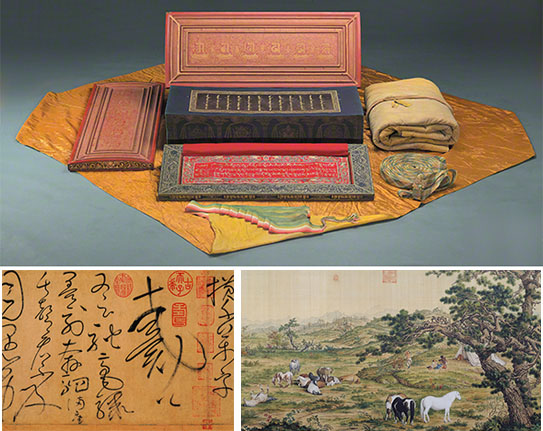 Tibetan Dragon Sutra Compiled during the Reign of Em , One Hundred Horses ( Lang Shih-ning, Qing Dynasty ) , Autobiography ( Tang Dynasty )
Tibetan Dragon Sutra Compiled during the Reign of Em , One Hundred Horses ( Lang Shih-ning, Qing Dynasty ) , Autobiography ( Tang Dynasty )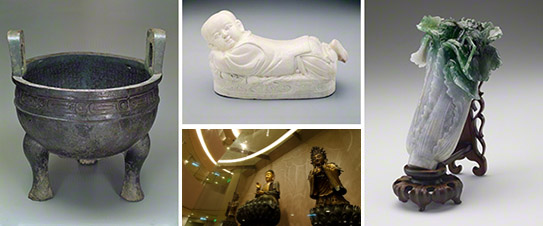 Mao Kong tripod ( Late West Zhou Dynasty ) , Pillow in shape of a recumbent child with white gl , Jadeite Cabbage ( Qing Dynasty ) , Exhibit Room
Mao Kong tripod ( Late West Zhou Dynasty ) , Pillow in shape of a recumbent child with white gl , Jadeite Cabbage ( Qing Dynasty ) , Exhibit Room




